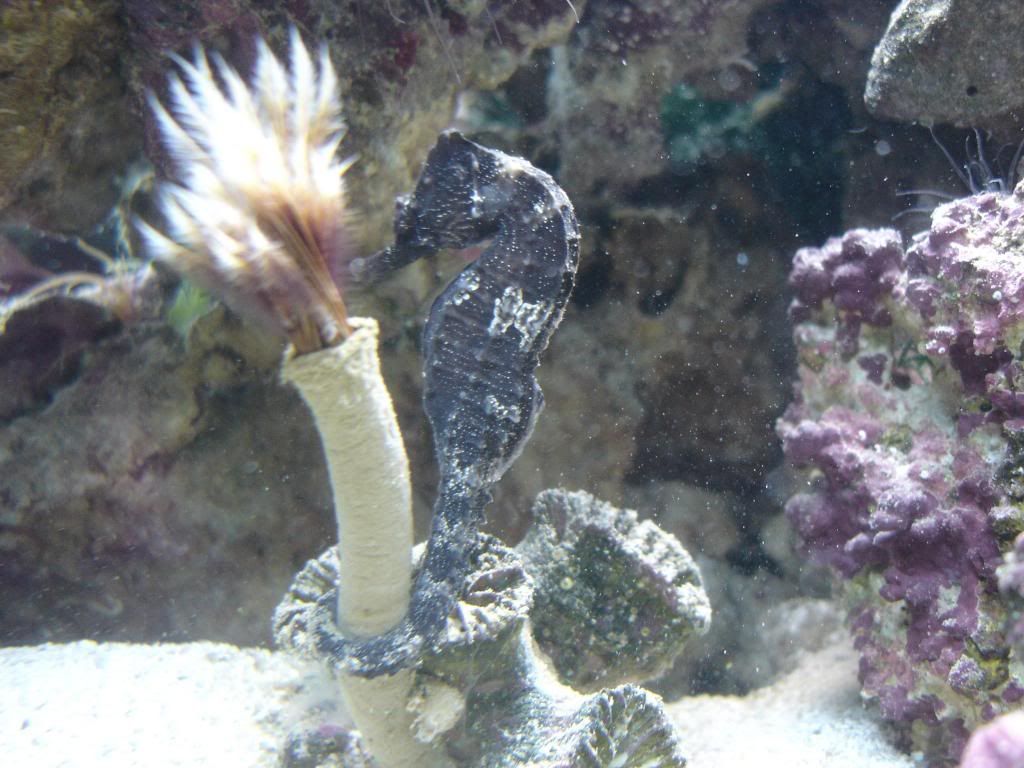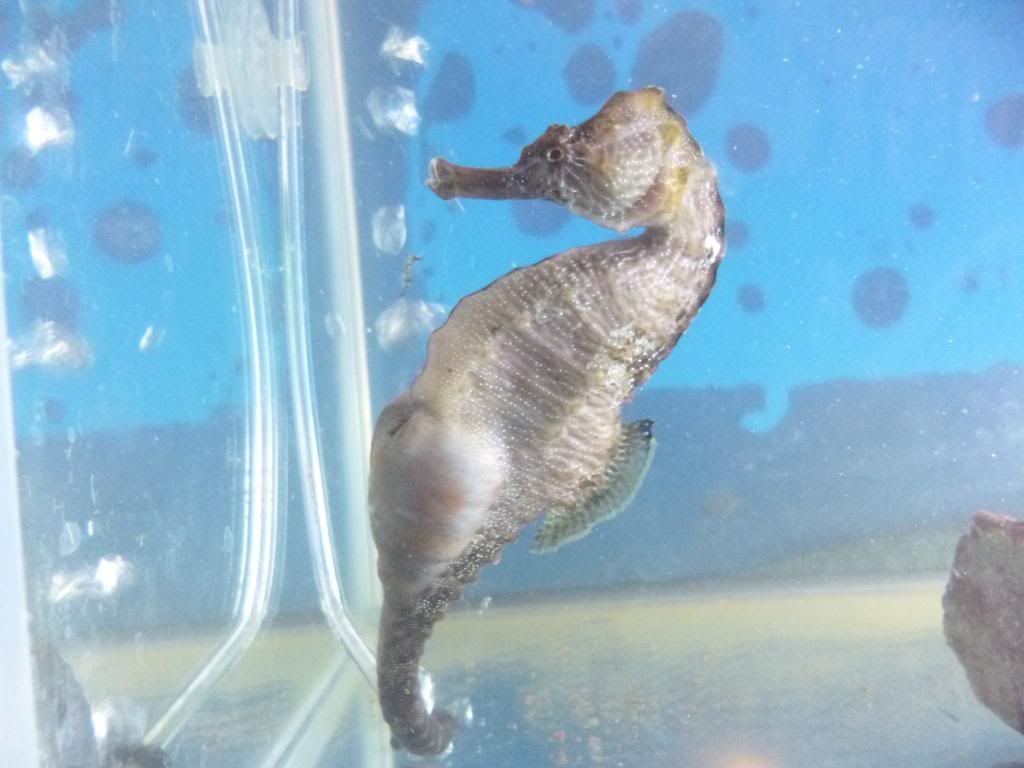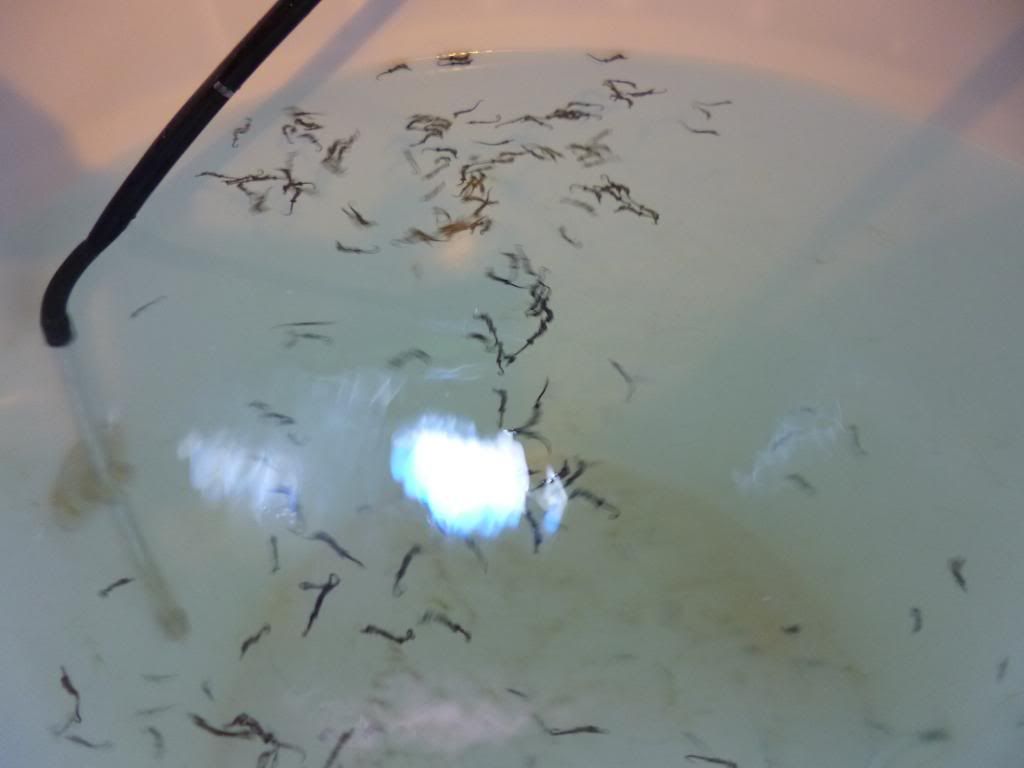In the UK we have a huge lack of access to drugs that can potentially save the life of a seahorse.
By the time most keepers realize that there is a serious problem with their seahorse, the seahorse often requires immediate treatment with antibiotics to give it a good chance of recovery. Whereas in other countries effective drugs are readily available at most fish stores, over here most are not even available through vets, let alone over the counter at a fish store.
With this in mind, the best thing we can do for our seahorses is to take preventative measures to try and avoid issues from arising. Always make sure that your seahorses are in optimum condition at all times. Here are some things that you can do to help prevent illness.
- Make sure that you purchase your seahorses from a reputable source. Do not purchase wild caught, tank raised, or captive bred seahorses that have been kept in a system that has their tanks on a combined system mixing water from tanks that contain either of the aforementioned types of seahorses.
- Do not overcrowd your tank. Remember, seahorses are messy eaters and require more volume per inch than most other fish. Check the size of the tank that you keep the seahorses in. If you are just about meeting the bear minimum requirements you may quickly find that your tank becomes unmanageable.
- Keep up with Tank Maintenance. Make sure that you stick to your tank maintenance routine, including regular water changes and checking that there are no dead spots* within the tank. Check that all tank mates (including corals) are suitable to keep with seahorses (Seahorse.org has a great guide). Use a probiotic, such as Sanolife to help with the control of pathogenic bacteria.
- Keep an Eye on the Temperature. High temperatures in a seahorse tank can be a real problem and whilst a seahorse might live in a location where the temps reach the high 70's in the wild, in captivity this can be a killer. Growth rates of bacteria increase greatly in higher temperatures and so its always best to keep temperatures in the low 70's for tropical species.
- Feed a Varied Diet. As well as offering different types of shrimps, I always find it a good thing to have a variety of brands too as this seems to help prevent seahorses becoming fussy eaters. Also, if you are lucky enough to be able find a live food source, this can also be introduced to the seahorses diet and is a great way of introducing vitamins and supplements.
- Do not mix species. For the same reason as indicated in point 1, seahorses of different species should not be mixed to avoid introduction of pathogens from one species to another. This includes any fish from the same family as seahorses, i.e. pipefish.
- Do not delay treatment. If you suspect that your seahorse may be ill, or you notice something different about your seahorse, either in appearance or character, seek immediate advice. Joining a forum like seahorse.org or fusedjaw can be a life saver. Refrain from getting advice from a single person in private as this can be detrimental to the seahorses welfare if they aren't as experienced as you think they are. Even if they are extremely knowledgeable, its easy to get distracted, confused or miss a vital piece of information and inadvertently give bad advice. This can quickly and easily be corrected if the advice has been given in public.
*Areas where detritus is allowed to accumulate.








